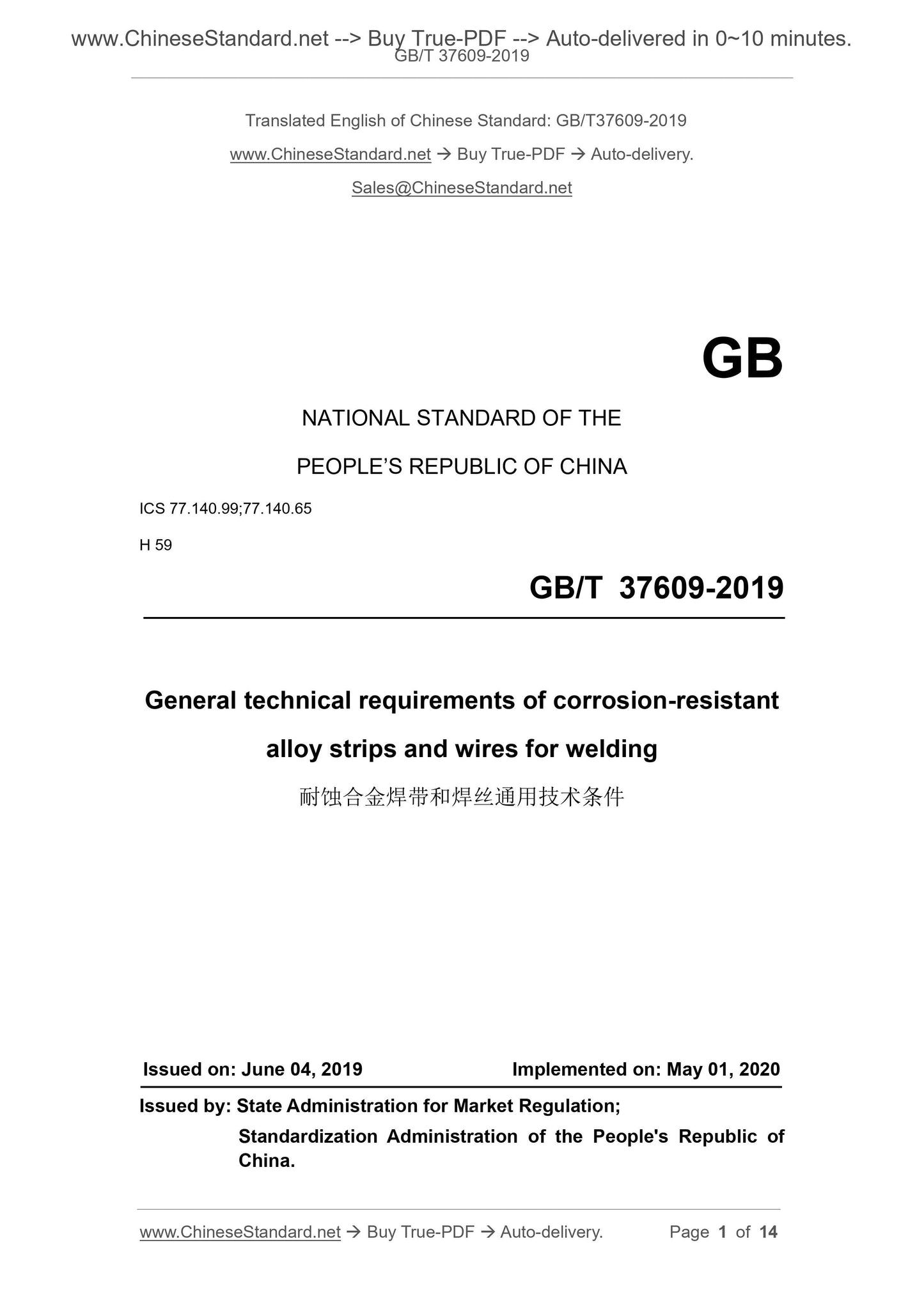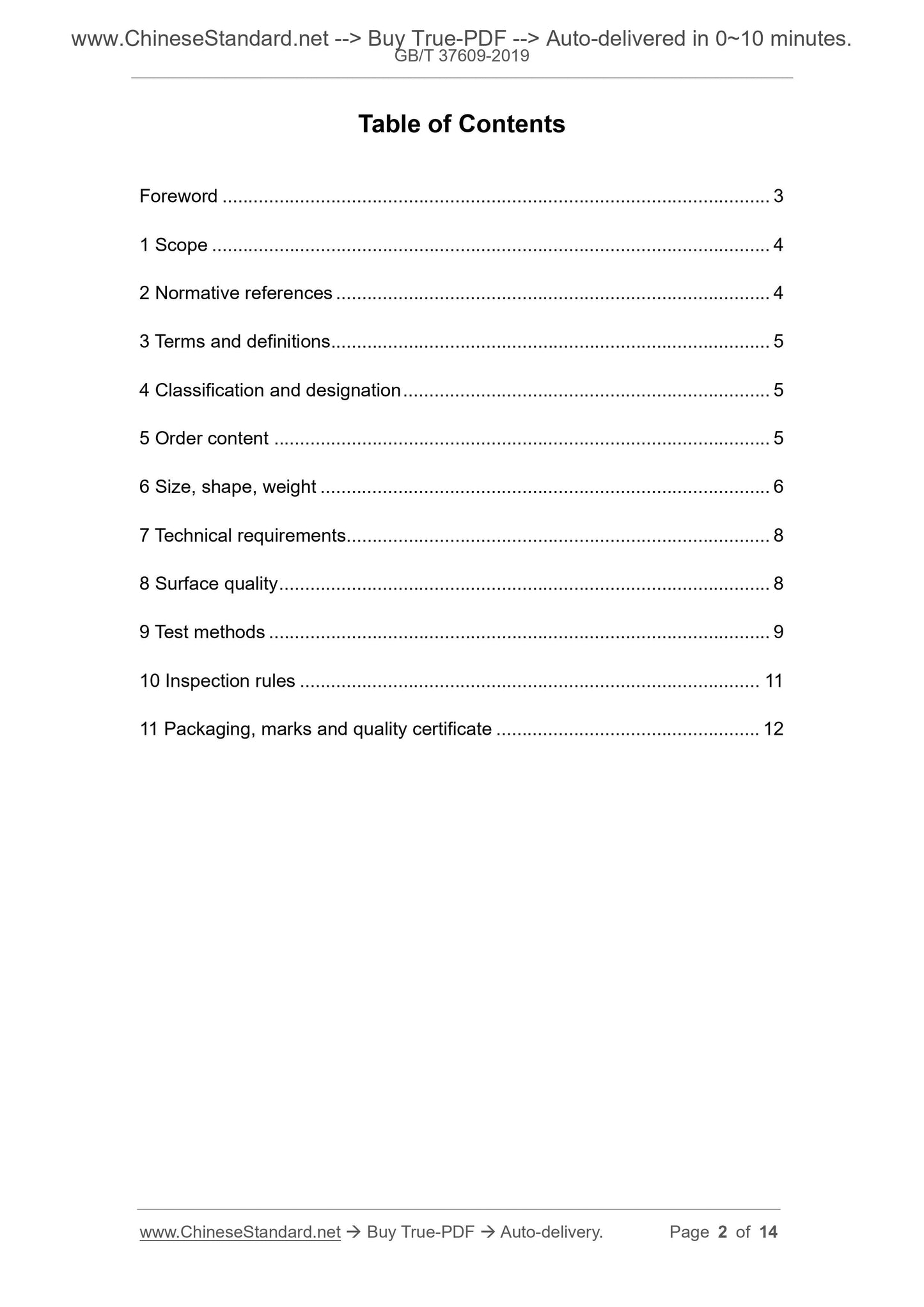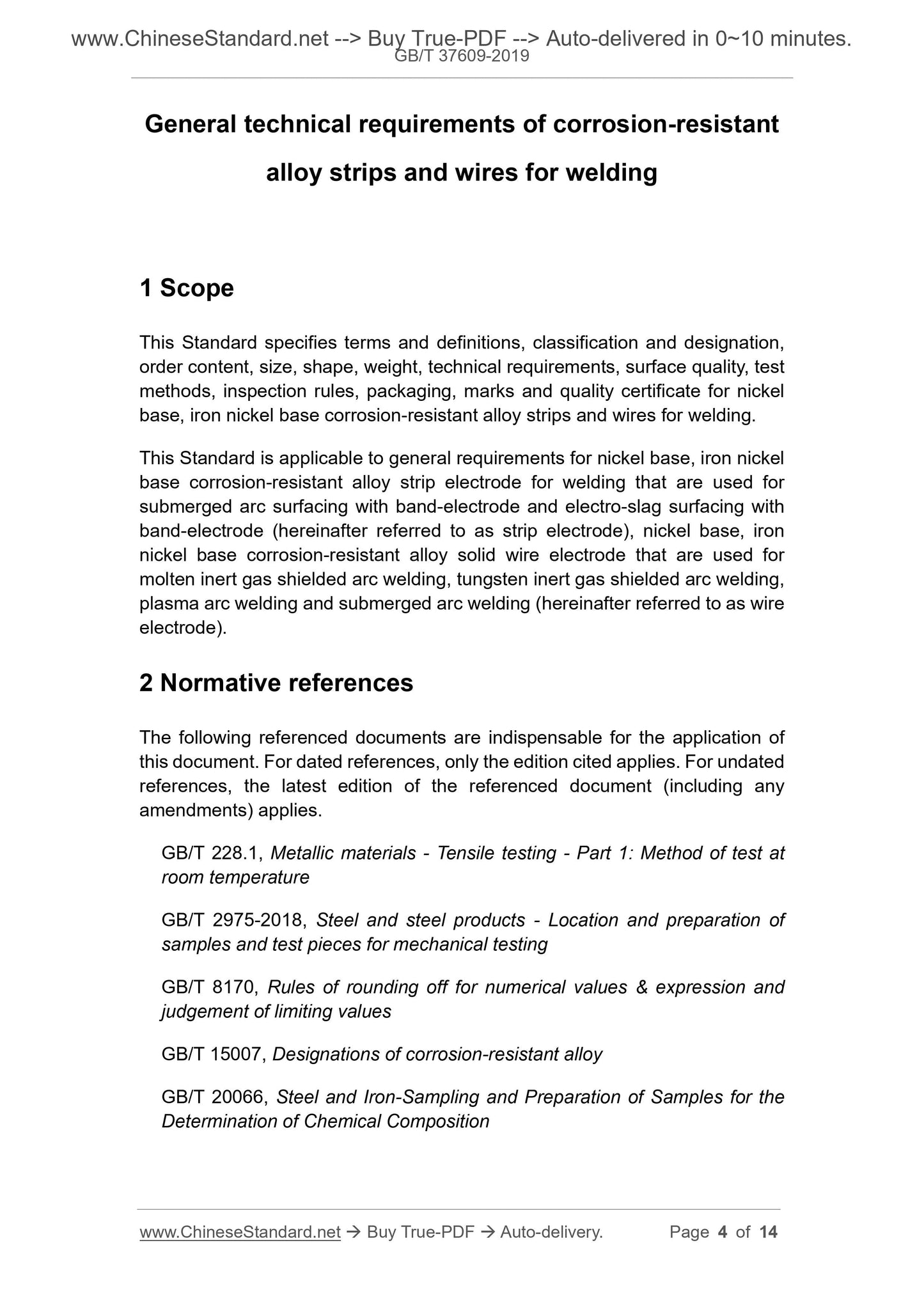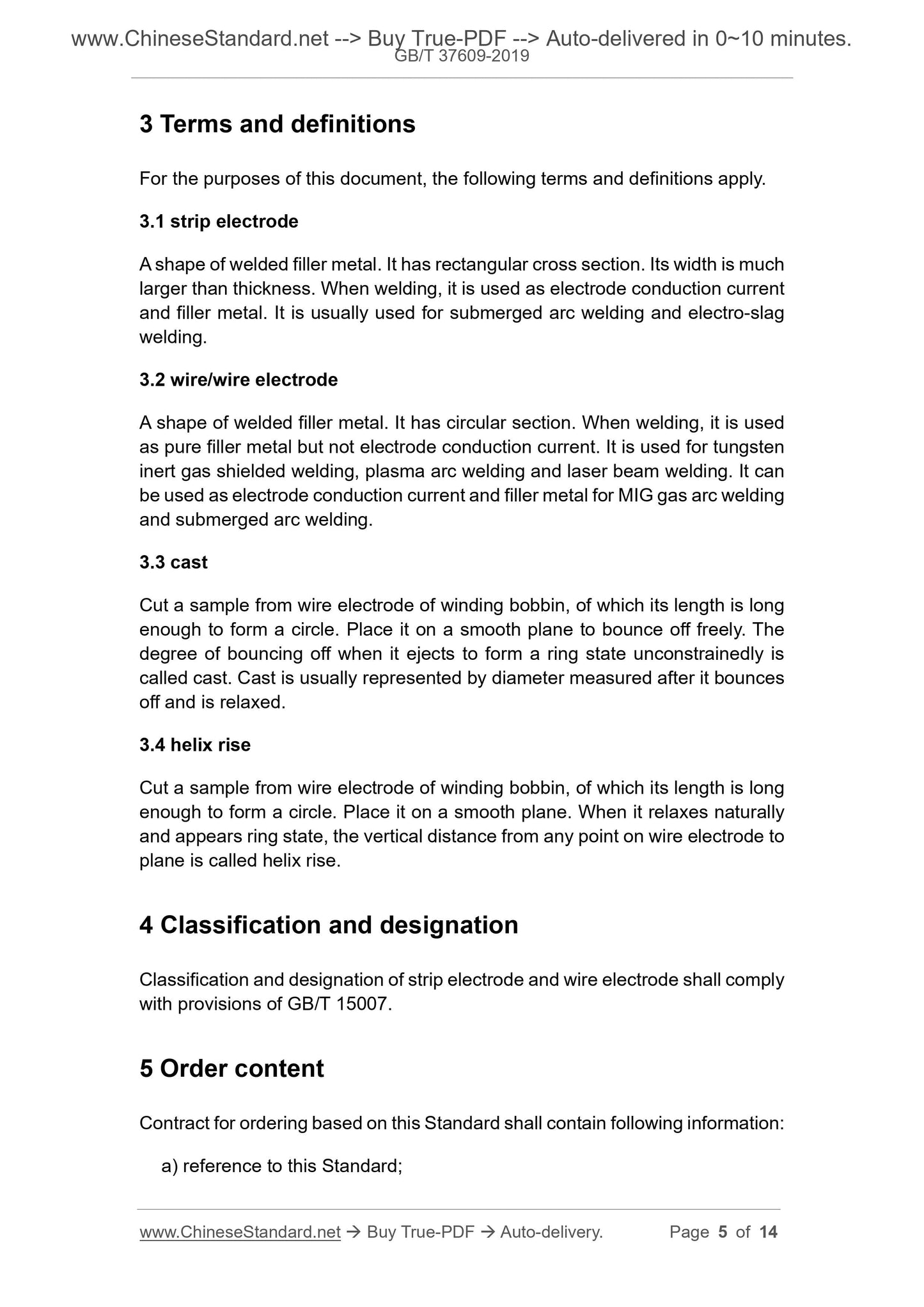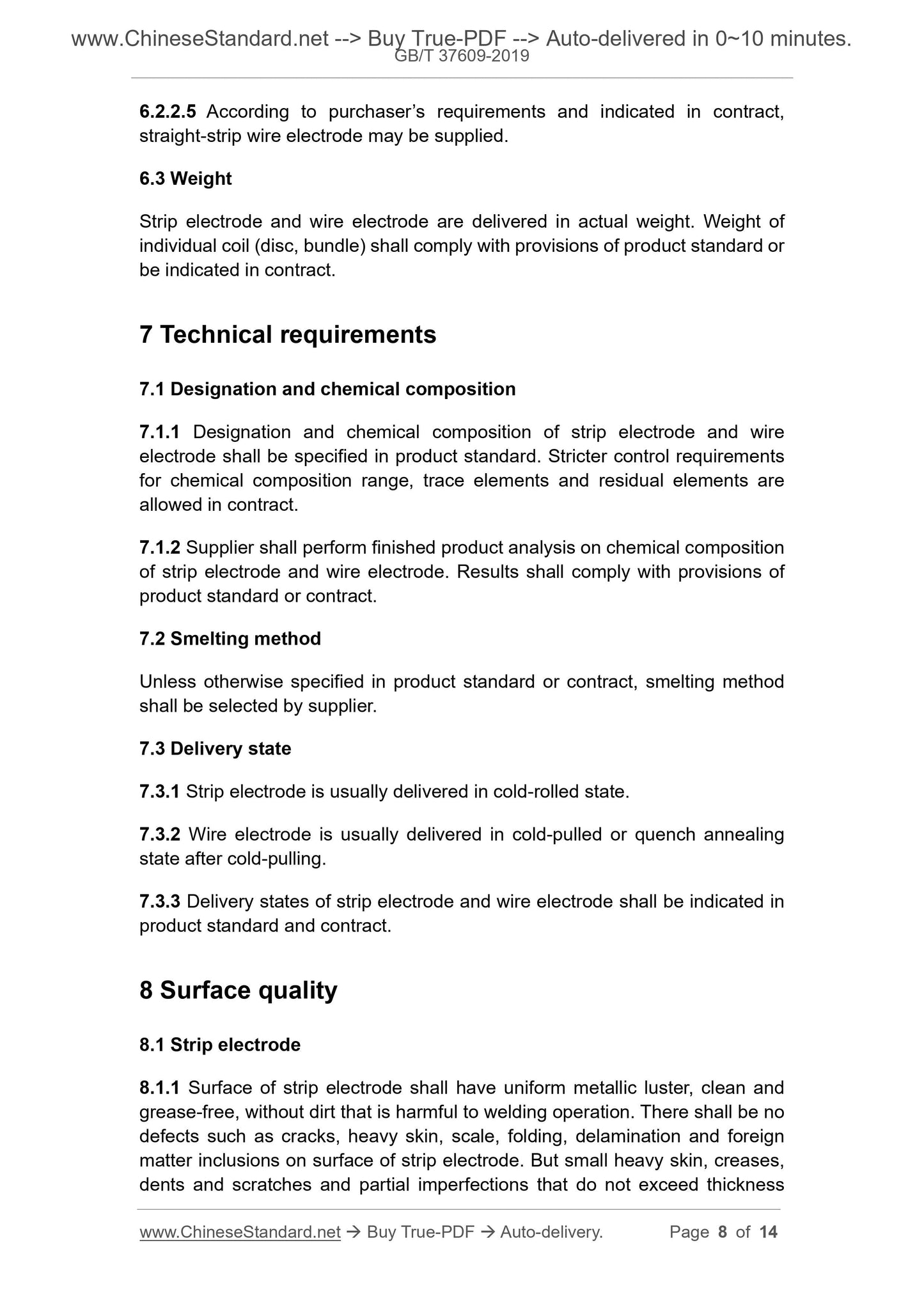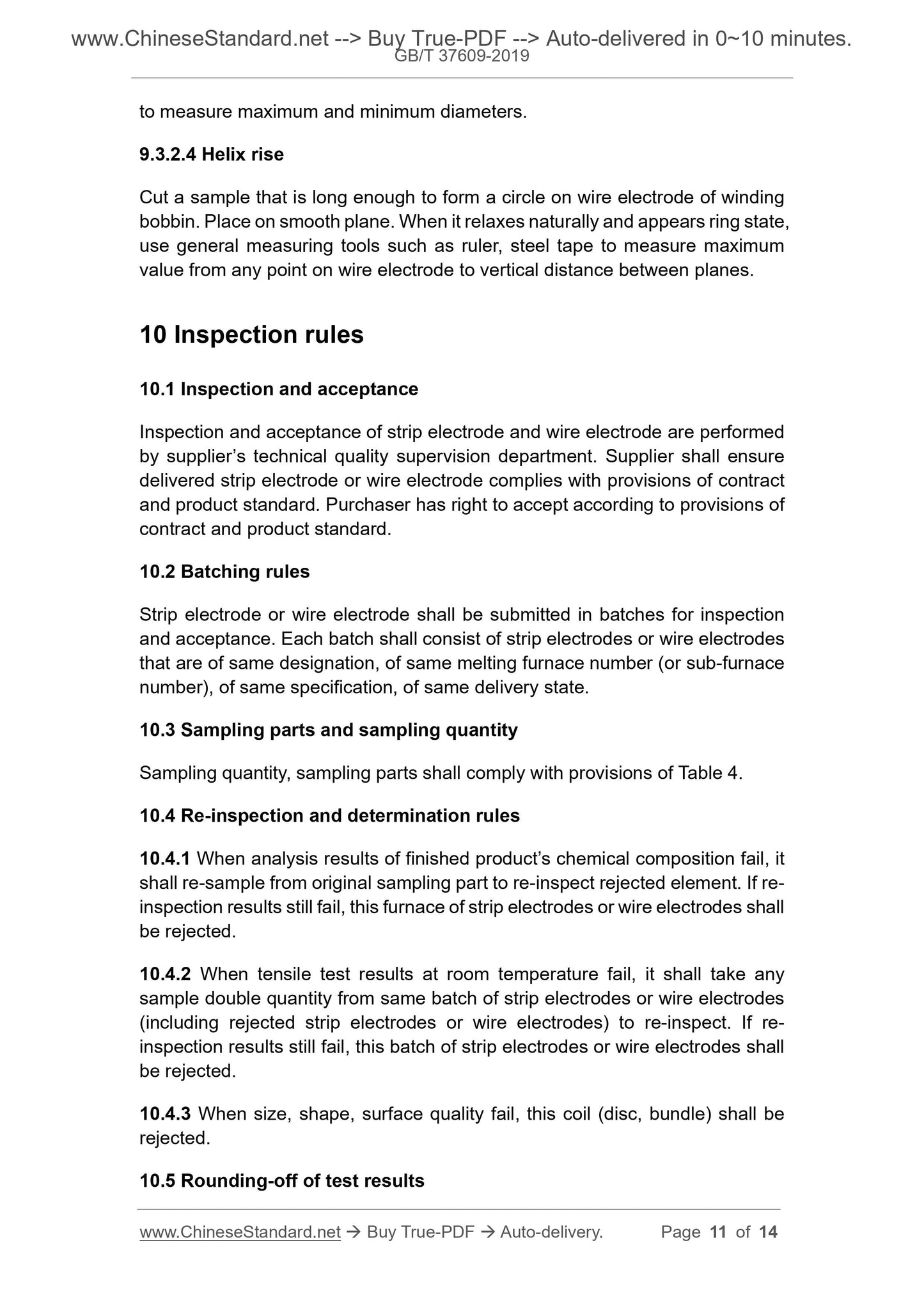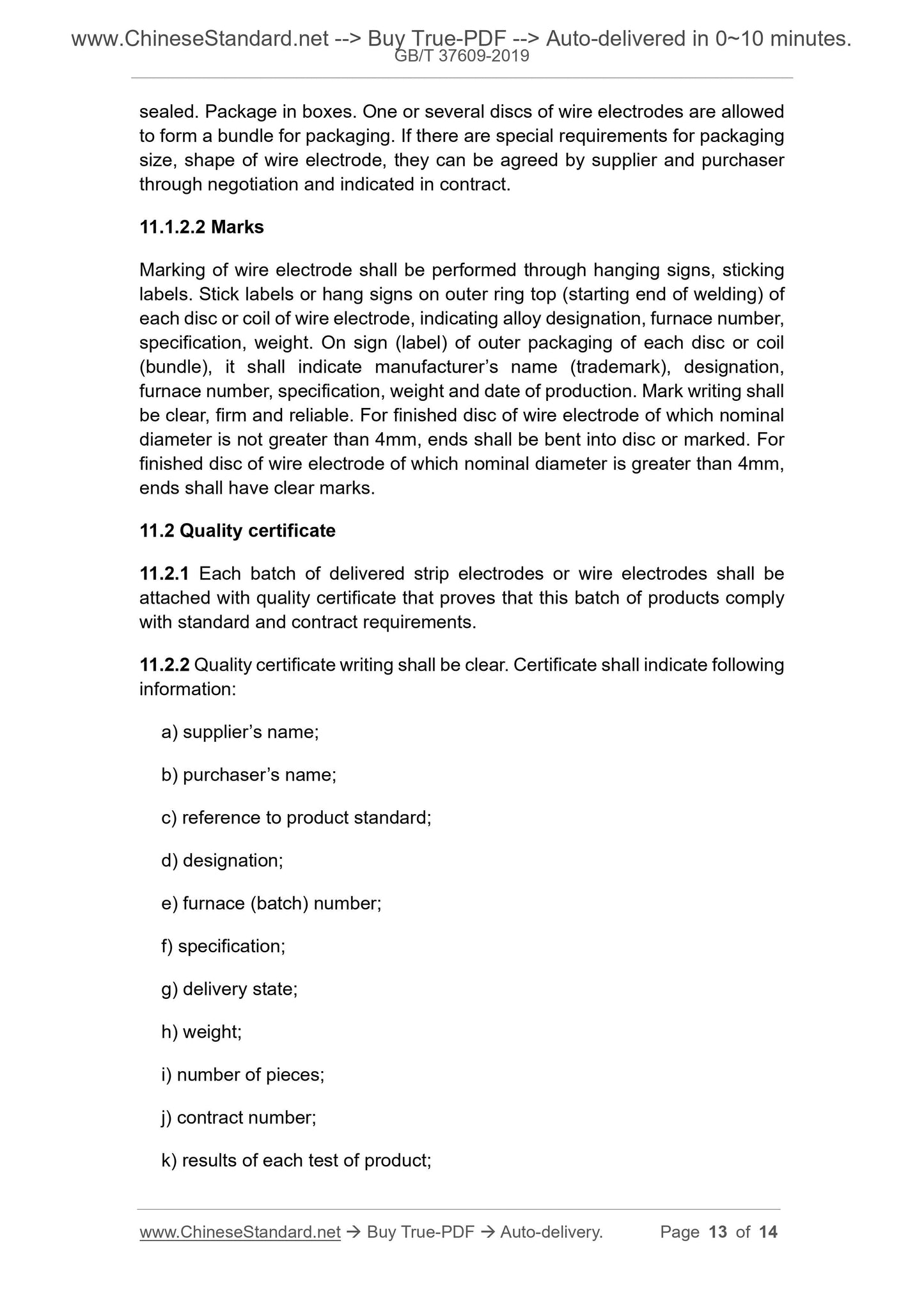1
/
of
7
www.ChineseStandard.us -- Field Test Asia Pte. Ltd.
GB/T 37609-2019 English PDF (GB/T37609-2019)
GB/T 37609-2019 English PDF (GB/T37609-2019)
Regular price
$150.00
Regular price
Sale price
$150.00
Unit price
/
per
Shipping calculated at checkout.
Couldn't load pickup availability
GB/T 37609-2019: General technical requirements of corrosion-resistant alloy strips and wires for welding
Delivery: 9 seconds. Download (and Email) true-PDF + Invoice.Get Quotation: Click GB/T 37609-2019 (Self-service in 1-minute)
Newer / historical versions: GB/T 37609-2019
Preview True-PDF
Scope
This Standard specifies terms and definitions, classification and designation,order content, size, shape, weight, technical requirements, surface quality, test
methods, inspection rules, packaging, marks and quality certificate for nickel
base, iron nickel base corrosion-resistant alloy strips and wires for welding.
This Standard is applicable to general requirements for nickel base, iron nickel
base corrosion-resistant alloy strip electrode for welding that are used for
submerged arc surfacing with band-electrode and electro-slag surfacing with
band-electrode (hereinafter referred to as strip electrode), nickel base, iron
nickel base corrosion-resistant alloy solid wire electrode that are used for
molten inert gas shielded arc welding, tungsten inert gas shielded arc welding,
plasma arc welding and submerged arc welding (hereinafter referred to as wire
electrode).
Basic Data
| Standard ID | GB/T 37609-2019 (GB/T37609-2019) |
| Description (Translated English) | General technical requirements of corrosion-resistant alloy strips and wires for welding |
| Sector / Industry | National Standard (Recommended) |
| Classification of Chinese Standard | H59 |
| Classification of International Standard | 77.140.99; 77.140.65 |
| Word Count Estimation | 10,132 |
| Date of Issue | 2019-06-04 |
| Date of Implementation | 2020-05-01 |
| Issuing agency(ies) | State Administration for Market Regulation, China National Standardization Administration |
Share
